We have received an inestimable gift. To be alive in this beautiful, self-organizing universe—to participat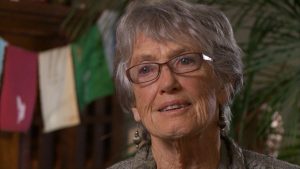 e in the dance of life with senses to perceive it, lungs that breathe it, organs that draw nourishment from it—is a wonder beyond words. It is an extraordinary privilege to be accorded a human life, with self-reflexive consciousness that brings awareness of our own actions and the ability to make choices. It lets us choose to take part in the healing of our world.
e in the dance of life with senses to perceive it, lungs that breathe it, organs that draw nourishment from it—is a wonder beyond words. It is an extraordinary privilege to be accorded a human life, with self-reflexive consciousness that brings awareness of our own actions and the ability to make choices. It lets us choose to take part in the healing of our world.
Gratitude for the gift of life is the primary wellspring of all religions, the hallmark of the mystic, the source of all true art. Yet we so easily take this gift for granted. That is why so many spiritual traditions begin with thanksgiving, to remind us that for all our woes and worries, our existence itself is an unearned benefaction, which we could never of ourselves create….
That our world is in crisis—to the point where survival of conscious life on Earth is in question—in no way diminishes the value of this gift; on the contrary. To us is granted the privilege of being on hand: to take part, if we choose, in the Great Turning to a just and sustainable society. We can let life work through us, enlisting all our strength, wisdom, and courage, so that life itself can continue.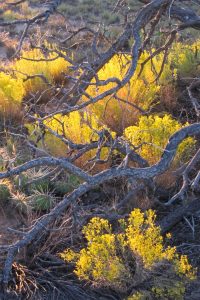
There is so much to be done, and the time is so short. We can proceed, of course, out of grim and angry desperation. But the tasks proceed more easily and productively with a measure of thankfulness for life; it links us to our deeper powers and lets us rest in them. Many of us are braced, psychically and physically, against the signals of distress that continually barrage us in the news, on our streets, in our environment. As if to reduce their impact on us, we contract like a turtle into its shell. But we can choose to turn to the breath, the body, the senses—for they help us to relax and open to wider currents of knowing and feeling….
Thankfulness loosens the grip of the industrial growth society by contradicting its predominant message: that we are insufficient and inadequate… that we need more—more stuff, more money, more approval, more comfort, more entertainment. The dissatisfaction it breeds is profound. It infects people with a compulsion to acquire that delivers them into the cruel, humiliating bondage of debt. So gratitude is liberating. It is subversive. It helps us realize that we are sufficient, and that realization frees us.

 experience of your breath for a few moments. Now visualizing or in some way sensing an enormous jeweled net, a net of boundless proportions, letting this fill your mind & heart. This net is woven of an infinite variety of brilliant crystal gems, each with countless facets. At each point where the strings of the net meet there is a brilliant, highly reflective, multi-faceted gem, with each jewel reflecting within itself every other jewel in the net. At the same time its image is reflected in each of the other gems.
experience of your breath for a few moments. Now visualizing or in some way sensing an enormous jeweled net, a net of boundless proportions, letting this fill your mind & heart. This net is woven of an infinite variety of brilliant crystal gems, each with countless facets. At each point where the strings of the net meet there is a brilliant, highly reflective, multi-faceted gem, with each jewel reflecting within itself every other jewel in the net. At the same time its image is reflected in each of the other gems. understanding from which compassion springs.
understanding from which compassion springs. unique arising as well. Maybe we see some of the decisions in each of the people’s lives that led to their interaction with the tea leaf or the coffee bean & maybe we see some of the things that influenced each of those decisions as well. It all infinitely goes on. Everything impacts everything else.
unique arising as well. Maybe we see some of the decisions in each of the people’s lives that led to their interaction with the tea leaf or the coffee bean & maybe we see some of the things that influenced each of those decisions as well. It all infinitely goes on. Everything impacts everything else.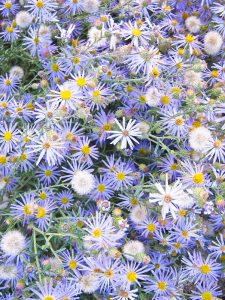 One of the greatest gifts of our mindfulness-based insight practice is our growing ability to intervene in the process of reactivity. So rather than immediately & ignorantly reacting in a way that causes more suffering for ourselves & others, our practice can give us some breathing space between what may be a strong or subtle unpleasant experience & our habitual reaction to unpleasant experience.
One of the greatest gifts of our mindfulness-based insight practice is our growing ability to intervene in the process of reactivity. So rather than immediately & ignorantly reacting in a way that causes more suffering for ourselves & others, our practice can give us some breathing space between what may be a strong or subtle unpleasant experience & our habitual reaction to unpleasant experience.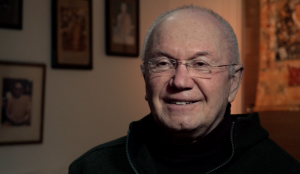 question everything about ourselves; we must challenge our most basic beliefs and convictions, even those we may have about the dharma itself…
question everything about ourselves; we must challenge our most basic beliefs and convictions, even those we may have about the dharma itself… llful, leading to harm and ill, should be abandoned; whatever is skillful, leading to happiness and peace, should be pursued. Apply the test of skillfulness to all teachings in all your actions. Where is this teaching taking you? Is it moving you in a direction that is wise and kind? One quick test isn’t enough, you know. You have to keep at it, so that your sensitivity to the results of your actions grows more and more refined with practice. When you’ve done the hard work of asking these questions, then you can decide for yourself whether a teaching, or a teacher, is worth following. And at the same time, you’ve also taught yourself how to live — a learning that can bring with it joy and the energy to go even deeper.
llful, leading to harm and ill, should be abandoned; whatever is skillful, leading to happiness and peace, should be pursued. Apply the test of skillfulness to all teachings in all your actions. Where is this teaching taking you? Is it moving you in a direction that is wise and kind? One quick test isn’t enough, you know. You have to keep at it, so that your sensitivity to the results of your actions grows more and more refined with practice. When you’ve done the hard work of asking these questions, then you can decide for yourself whether a teaching, or a teacher, is worth following. And at the same time, you’ve also taught yourself how to live — a learning that can bring with it joy and the energy to go even deeper. e and Joyful manifest in the practice?
e and Joyful manifest in the practice? deeper states of suffering and therefore is not a joyful path to pursue because it is unsatisfying.
deeper states of suffering and therefore is not a joyful path to pursue because it is unsatisfying. relationships, at work, or in the surprising events that might come about in worldly affairs – whatever difficult, dull, boring, fascinating, wonderful, peaceful or hair-raising situations we may find ourselves in – the practice is found within them. They are our practice. With right view, we are able to bring the dharma alive and integrate it into all situations, and because of this we are safe in knowing how not to suffer. We are less reactive and not so liable to fall into the wrong view of feeding the defilements.
relationships, at work, or in the surprising events that might come about in worldly affairs – whatever difficult, dull, boring, fascinating, wonderful, peaceful or hair-raising situations we may find ourselves in – the practice is found within them. They are our practice. With right view, we are able to bring the dharma alive and integrate it into all situations, and because of this we are safe in knowing how not to suffer. We are less reactive and not so liable to fall into the wrong view of feeding the defilements.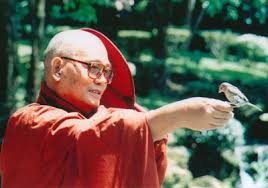 One should reflect, he said, on the fact that the whole world of beings is made up of nothing but mind & matter which have arisen but do not stay. Mind & matter do not remain still for one single moment; they are in constant flux. Once we find ourselves in this body & mind, there is nothing we can do to prevent growth from taking place. When we are young we like to grow, but when we are old we are stuck in an irreversible process of decline.
One should reflect, he said, on the fact that the whole world of beings is made up of nothing but mind & matter which have arisen but do not stay. Mind & matter do not remain still for one single moment; they are in constant flux. Once we find ourselves in this body & mind, there is nothing we can do to prevent growth from taking place. When we are young we like to grow, but when we are old we are stuck in an irreversible process of decline.
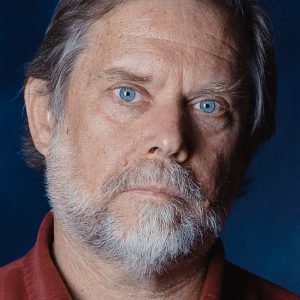
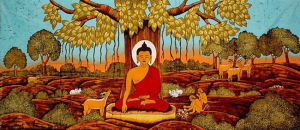 “We are here to overcome the illusion of our separation,” Vietnamese Zen master & poet Thich Nhat Hanh has said. Traditional Buddhist teachings help us to wake up individually & realize that we are not separate from other people & the rest of the world. And while the ecological crisis is a new challenge, many of those classic teachings are relevant to our situation. There seem to be important parallels, for example, between our usual individual predicament—our sense of separation from others—& our collective sense of separation from the natural world today. Is our ecological situation a larger version of the same problem? In both cases the separation between a self “inside” & the world “outside” is uncomfortable: a self that doesn’t really exist can never secure itself. Yet we keep trying, often in ways that just make things worse. We don’t need to “return to nature” but to realize that we’ve always been a part of it, & what that means for how we live. Eihei Dogen, who founded the Soto Zen school in the 13th century, described his own enlightenment as clearly realizing the “mind is nothing other than rivers & mountains & the great wide earth, the sun & the moon & the stars.”
“We are here to overcome the illusion of our separation,” Vietnamese Zen master & poet Thich Nhat Hanh has said. Traditional Buddhist teachings help us to wake up individually & realize that we are not separate from other people & the rest of the world. And while the ecological crisis is a new challenge, many of those classic teachings are relevant to our situation. There seem to be important parallels, for example, between our usual individual predicament—our sense of separation from others—& our collective sense of separation from the natural world today. Is our ecological situation a larger version of the same problem? In both cases the separation between a self “inside” & the world “outside” is uncomfortable: a self that doesn’t really exist can never secure itself. Yet we keep trying, often in ways that just make things worse. We don’t need to “return to nature” but to realize that we’ve always been a part of it, & what that means for how we live. Eihei Dogen, who founded the Soto Zen school in the 13th century, described his own enlightenment as clearly realizing the “mind is nothing other than rivers & mountains & the great wide earth, the sun & the moon & the stars.”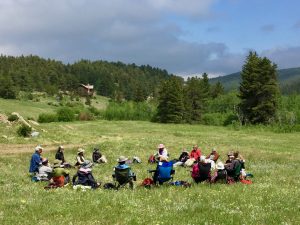 At different times practitioners may emphasize some of these components of ecodharma more than others, but all three are important. Then we can ask & plan together: what does it mean to be a bodhisattva today? How can we contribute to the healing of the earth, including the healing of our collective relationship with the earth?
At different times practitioners may emphasize some of these components of ecodharma more than others, but all three are important. Then we can ask & plan together: what does it mean to be a bodhisattva today? How can we contribute to the healing of the earth, including the healing of our collective relationship with the earth?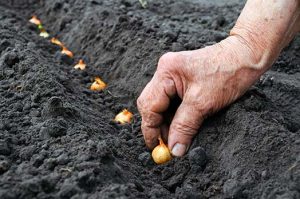
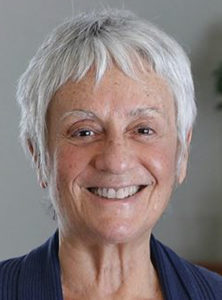 So here I am this spring considering FAITH. What is it? Where does it come from? How does it work? What is its role in relationship to the teachings & practices as taught by the Buddha? Is there a difference between FAITH & BELIEF… & if so, what is the difference? FAITH in what… in who?
So here I am this spring considering FAITH. What is it? Where does it come from? How does it work? What is its role in relationship to the teachings & practices as taught by the Buddha? Is there a difference between FAITH & BELIEF… & if so, what is the difference? FAITH in what… in who?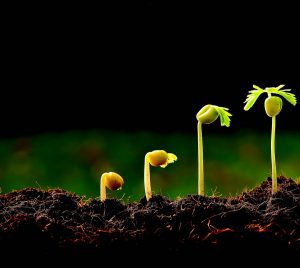
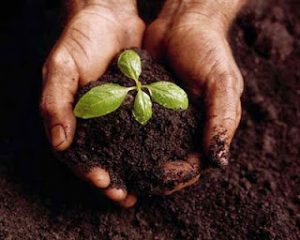 evolves towards the blossoming of deepening concentration, clear mindful awareness & understanding/insight, we begin to touch an unfettered FAITH in the incredibly vast potential of understanding that is available via our spiritual path. Unshakable Faith is rooted in staying open & connected in the experience of the moment… open to the mystery/the truth beyond the realm of our often tightly clung to conditioned habituated ideas, opinions, beliefs, interpretations & feelings.
evolves towards the blossoming of deepening concentration, clear mindful awareness & understanding/insight, we begin to touch an unfettered FAITH in the incredibly vast potential of understanding that is available via our spiritual path. Unshakable Faith is rooted in staying open & connected in the experience of the moment… open to the mystery/the truth beyond the realm of our often tightly clung to conditioned habituated ideas, opinions, beliefs, interpretations & feelings.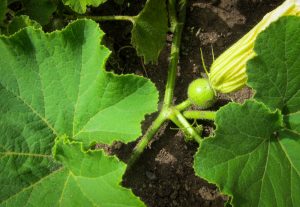 ‘waking up‘ out of ongoing dissatisfaction, out of feeling incomplete, separate & disappointed… ‘waking up‘ from delusion & craving. Saddha moves us towards learning to live our life grounded in an open & kindhearted mindful presence. FAITH affords us the possibility of ‘waking up‘ into the spaciousness of openhearted presence & ease of being with things as they are, however they are inside us & outside us & being able to respond appropriately with the great vitality of wisdom & compassion.
‘waking up‘ out of ongoing dissatisfaction, out of feeling incomplete, separate & disappointed… ‘waking up‘ from delusion & craving. Saddha moves us towards learning to live our life grounded in an open & kindhearted mindful presence. FAITH affords us the possibility of ‘waking up‘ into the spaciousness of openhearted presence & ease of being with things as they are, however they are inside us & outside us & being able to respond appropriately with the great vitality of wisdom & compassion. The fourth precept is to refrain from false, harmful & reckless speech. Speech is a primary way in which we relate to & communicate with each other. It can enhance connection, or be the agent of disconnection. In expressing our intentions & aspirations, our words, mindfully spoken, can remind us of what we hold most dear.
The fourth precept is to refrain from false, harmful & reckless speech. Speech is a primary way in which we relate to & communicate with each other. It can enhance connection, or be the agent of disconnection. In expressing our intentions & aspirations, our words, mindfully spoken, can remind us of what we hold most dear.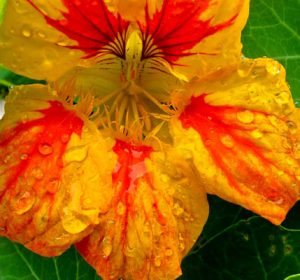

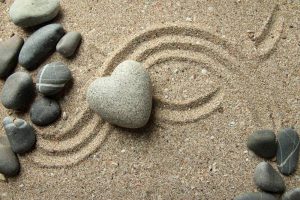 Tech Support:
Tech Support: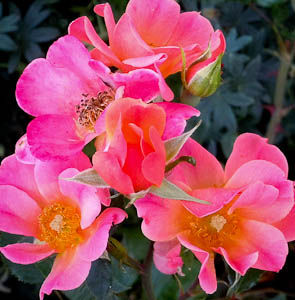
 s this normal?
s this normal?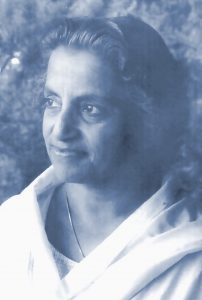 related to the way you sit or stand, the way you gesticulate or articulate throughout the day. Whether you want it or not, the inner state of your being gets expressed in your behaviour…” Vimala Thakar
related to the way you sit or stand, the way you gesticulate or articulate throughout the day. Whether you want it or not, the inner state of your being gets expressed in your behaviour…” Vimala Thakar  is a way of living that introduces us to that other part of our life. The silence, the motionlessness, it introduces us to our pure ISNESS which have never been conditioned & shall never be conditioned. […]
is a way of living that introduces us to that other part of our life. The silence, the motionlessness, it introduces us to our pure ISNESS which have never been conditioned & shall never be conditioned. […]